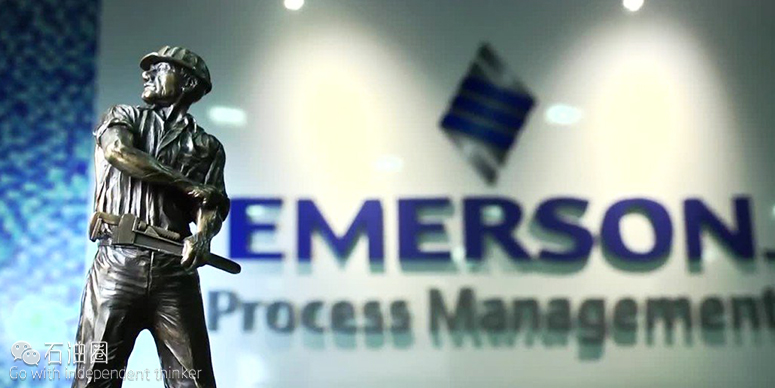With operators needing to ensure that their oil & gas reservoirs are operating at the very peak of their potential, the successful and economic flow of hydrocarbons from the reservoir to the refinery has never been more important.
At the same time, however, operators are facing increased threats to production particularly from unchecked water – particularly prevalent in deepwater wells and wet gas fields with high Gas Void Fraction (GVF).
Water and especially saline water in the gas flow can cause scaling, hydrates and corrosion in wells and pipelines, leading to the worst case scenario of wells being shut down. Furthermore, with the proliferation of subsea tiebacks – many of which are over 100 kilometers long – operators need to know about threats to production in real-time.
In addition, with many operators sharing facilities, different ownership structures, and the develop- ment of tiebacks from different licenses, accurate production allocation is vital for reconciling oil, gas and water measurements at the entry and exit points of the production network
Operators today need to measure the early onset of formation-water production in real time, enabling them to take preventative or remedial action, if necessary. They need to know how much water is being produced and they need to access accurate, real-time subsea measurement and allocation data.
The enhanced meter provides the earliest possible detection of water in the wellbore, resulting in more accurate production measurement, reduced risk and improved flow assurance, explained Sturle Haaland, Sales Director, Europe, for Emerson. “With more computer power than ever before and the ability to do advanced signal processing at a much higher rate, this advancement was a natural evolution.”
The meter’s microwave-based measurements and multivariate analysis functionality can detect changes in water content in a flowing well at less than 0.2 parts per million, allowing operators to more precisely assess water encroachment. An online salinity measurement system alerts the reservoir engineer when formation water is entering the well.
“Water is the source of all evil in oil and gas production,” Mr Haaland said, noting that formation water breakthrough into a well leads to corrosion, scaling and the formation of hydrates. “In the past, when oil prices were high, operators would estimate how much methyl ethyl glycol (MEG) they would have to inject into a gas well to prevent hydrates, often overdosing to ensure that ice plugs didn’t form at the wellhead and subsequently cripple the line between the well and the transport vessel or LNG plant.”
At OTC in May, Emerson Process Management launched the newest generation of the Roxar subsea wet gas meter for gas and gas condensate fields. The enhanced meter can detect changes in water content in a flowing well at less than 0.2 parts per million so operators can more precisely assess water encroachment.
Today, with every bit of volume of gas really counting, companies don’t have the opportunity to flood wells with MEG because it actually displaces the gas. Additionally, MEG regeneration plants are expensive to operate and maintain. “Companies are operating with more controlled risk than ever before, and with this device they can be certain of water encroachment and save their wells from collapse without flooding them,” he continued. “Even in this market, with low oil prices, there has never been a better time for new technology that can help operators avoid doubt and embrace the risk that comes with maximizing production.”
The latest Roxar subsea Wetgas Meter, launched in May 2015, provides highly accurate flow rates for water, gas and condensate – vital information to protect subsea well and pipeline integrity and support metering/allocation strategies in challenging gas and gas condensate fields.
Whether used for continuous monitoring or intermittent well testing, the wet gas meter reduces risk and strengthens production optimization strategies. Benefits include:
Improved reservoir management with a maximizing of gas production while avoiding water breakthrough. The meter detects changes in water content of the flowing well at as little as 0.2 ppm (parts per million) – sensitivity never been reached before and representing less than a droplet of water finely distributed in a volume equal to that of four car fuel tanks.
- Improved flow assurance with the high water sensitivity and formation water detection functionality providing a powerful tool for the optimization of injection rates for MEG, scale and corrosion inhibitors
- Highly effective hydrocarbon and allocation metering strategies with the meter providing real-time and accurate hydrocarbon measurements for operators’ fiscal allocation obligations.
- Maximum speeds, flexibility and robustness for all reservoir conditions with the meter ideally suited for changing operating conditions and varying fluid compositions.
The Roxar subsea Wetgas meter has field-proven reliability and has provided cost savings and increased reservoir control in subsea fields across the world, making wet gas metering an integral part of operators’ future flow assurance, production optimization and hydrocarbon allocation strategies.
Features and benefits
- Microwave-based measurements and multivariate analysis functionality.
- Field-proven reliability and full redundancy.
- Highly accurate microwave and gamma densitomer.
- PVT (Pressure, Volume, Temperature) independence on water fractions.
- Compact design, low weight and power consumption
- Measurement speeds at 20 times per second.
- Continuous reservoir and process surveillance.
The Roxar Wetgas meter is a state-of-the-art meter for inline measurement of wet gas flow. The meter measures the water content in the wet gas stream and individual flow rate of hydrocarbons and water. The WGM is designed for installation in wells with GVF > 95%vol . The design allows for very compact solutions, simplifying installations and integration in onshore and offshore topside facilities.
Water measurement
Accurate measurement of wet gas flow including water and liquid detection is crucial for operators of wet gas producing fields for several reasons:
- Well testing
- Improved reservoir management
- Production allocation
- Optimized chemical injection to prevent hydrate formation
Proven technology
- Corrosion control
- Operational costs
- Flow assurance
- High regularity
The Roxar WGM is based on proven technology, and utilized by operators all over the world. Meters are commercially available in both subsea and topside versions.
Operating principle
Water Fraction Measurement
The Roxar WGM employs the same proven, unique and patented microwave technology as the Roxar Watercut meters. This technology has been applied in the Watercut meter for decades, and has a very high experience MTBF. The dielectric properties of the fluid are measured with an extremely high level of accuracy and sensitivity, and the fractions of hydrocarbon and water are subsequently calculated from these measurements.
Flow Measurement
Flow measurement is obtained by DP measurement over a V-Cone. Pressure and temperature are measured by dedicated transmitter.
User Interface Software
The Roxar Wetgas meter utilizes the Roxar Wetgas Instrument Console software for configuration, diagnostics, troubleshooting, maintenance and display of measurement data. The Roxar Wetgas Instrument Console is DACQUS® enabled, which allows the instrument console capabilities to be performed from the DACQUS FieldWatch desktop enabling the instrument console to be run either locally, or from a remote location.
- Continuous and accurate real-time measurements of gas, water and condensate flow rates at the wellhead.
- Improved flow assurance through the ability to take preventative action against hydrates, corrosion and scaling.
- Accurate measurement of wet gas flow for allocation purposes and reduced costs through comingled flow and subsea well tie-ins.


 石油圈
石油圈
